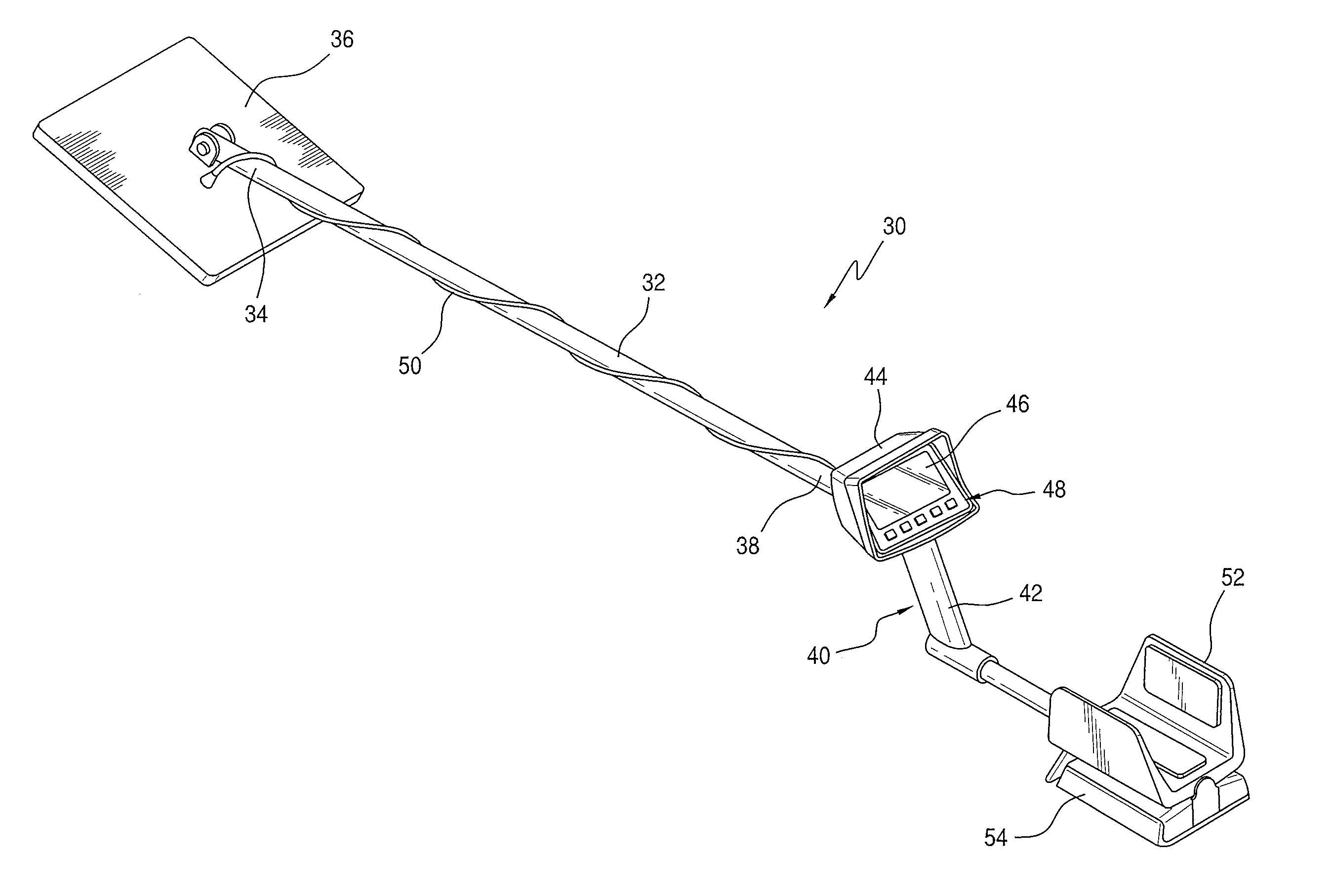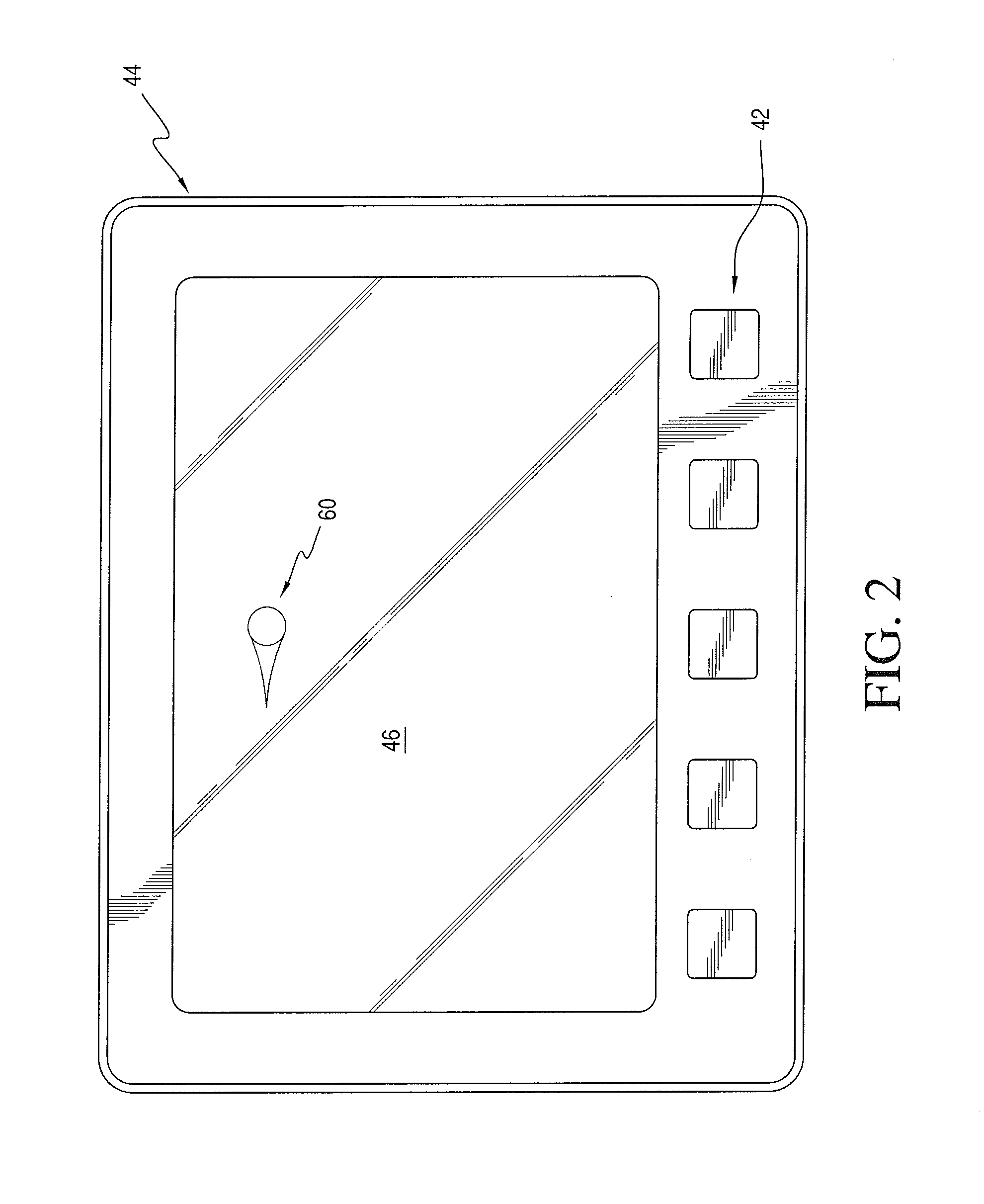Metal Object or Feature Detection Apparatus and Method
a detection apparatus and metal detector technology, applied in the field of metal detectors and methods, can solve the problems of reducing the sensitivity of the metal detector, coils becoming unbalanced, and not allowing the user to determine whether the sensed item is worth recovering, so as to improve the indication of the target's location and enhance the view of the target imag
- Summary
- Abstract
- Description
- Claims
- Application Information
AI Technical Summary
Benefits of technology
Problems solved by technology
Method used
Image
Examples
first embodiment
[0057]Turning now to a more detailed description of the present invention, with reference to FIGS. 1-6, there is illustrated in FIG. 1 a hand-held metal object or target detection apparatus 30 having a stem section, or shaft 32 supporting at a distal end 34 a pickup head 36 carrying a sensor array to be described, and having at a proximal or near end 38 a handle 40 having a hand grip 42. Mounted on the proximal hand grip and connected the sensor array is a controller and interface module 44 which incorporates electronic detection circuitry having signal generation and signal receiver circuits, further described below, together with a display screen 46 and an operator touch pad 48.
[0058]The pick-up or search head 36 includes transmit and receive coils that are connected via a cable 50 to the electronics package housing 38. Although illustrated as being wrapped around the stem 32, it will be understood that the cable can extend through the stem. As illustrated in FIG. 1, the detector ...
second embodiment
[0087]After adjustment and normalization of the detector 30, the user sweeps or moves the pickup array in head 36 over the soil as the perimeter coil, and the quadrant coils in the second embodiment, are illuminated. The target location information is sensed as phase changes in the induced magnetic field that is received in each of the sensor coils, and these phase changes are observable as changes in the pixel display blocks visible on display screen 46 as the user sweeps the pickup array in head 36 past a concealed target so that, in terms of relative motion, the target image traverses the display screen while the user sweeps the pickup array over ground.
[0088]In the absence of target items or objects, the display screen of detector 30 will generate an easily distinguishable 2-D image for a sensed response from uniform and homogenous soil. In the second embodiment described above, the screen 46 will provide a background color representing the conductivity of the soil. As the user ...
PUM
 Login to View More
Login to View More Abstract
Description
Claims
Application Information
 Login to View More
Login to View More - R&D
- Intellectual Property
- Life Sciences
- Materials
- Tech Scout
- Unparalleled Data Quality
- Higher Quality Content
- 60% Fewer Hallucinations
Browse by: Latest US Patents, China's latest patents, Technical Efficacy Thesaurus, Application Domain, Technology Topic, Popular Technical Reports.
© 2025 PatSnap. All rights reserved.Legal|Privacy policy|Modern Slavery Act Transparency Statement|Sitemap|About US| Contact US: help@patsnap.com



